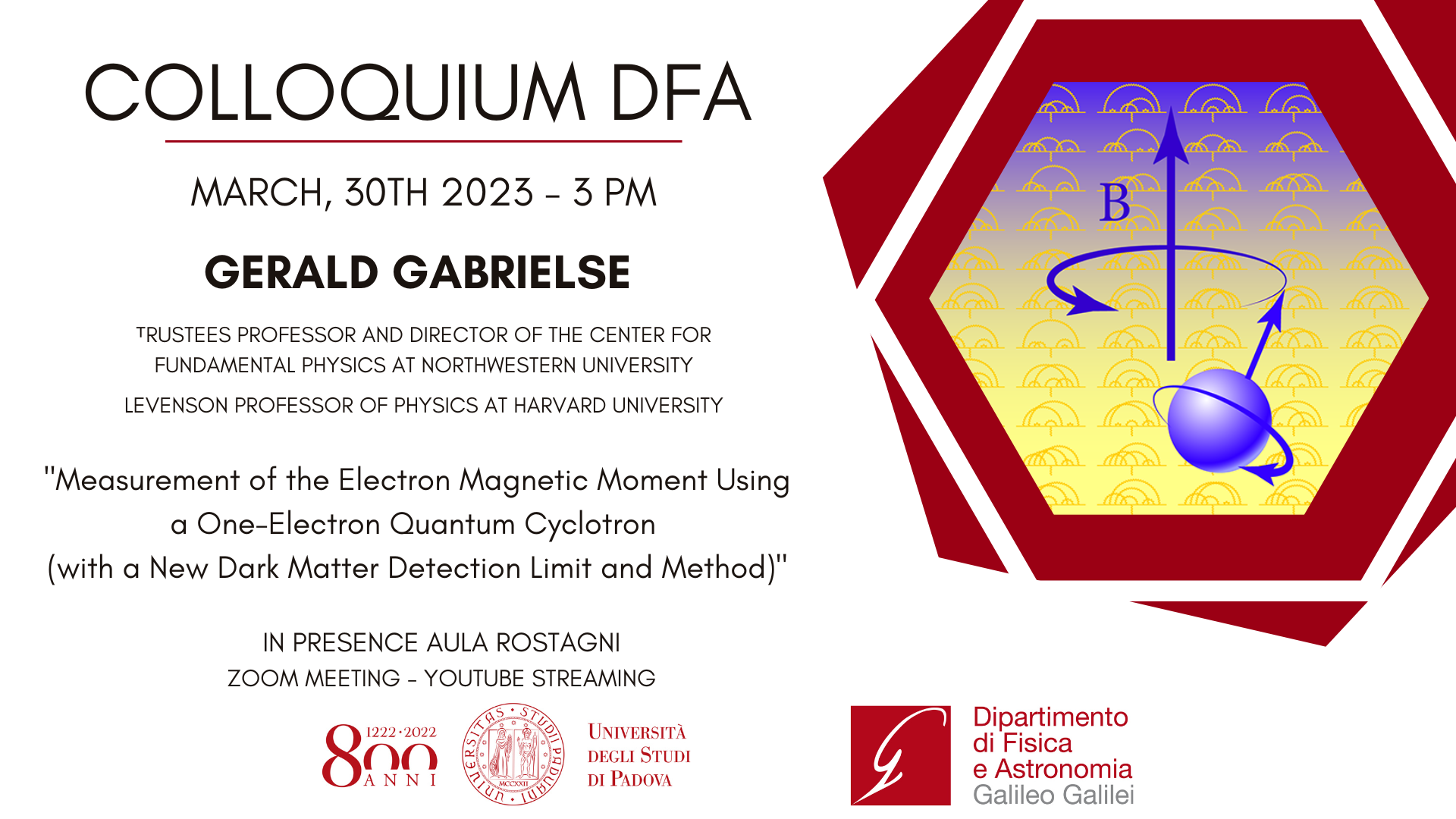Colloquia DFA: Gerald Gabrielse
by
1/1-1 - Aula "A. Rostagni"
Dipartimento di Fisica e Astronomia - Edificio Marzolo

A one-electron quantum cyclotron, quantum mon-demolition (QND) detection, inhibited spontaneous emission, a split dilution refrigerator, and a self-shielded superconducting solenoid have been used to measure the electron's magnetic moment. This most precise determination of a property of an elementary particle, to 1.3 parts in 10^{13}, was made to text the most precise prediction of the Standard Model of Particle Physics (SM). In the most precise confrontation of theory and measurement, the SM prediction agrees with what we measure to 1 part in 10^{12}. BSM (beyond the SM) particles and electron substructure could make the measurement and prediction differ (like quark substructure shifts the proton moment). The measurement precision will allow a much better SM test once discrepant measurements of the fine structure constant are resolved. SM sectors involved include the Dirac prediction, QED (quantum electrodynamics) through the 10th order with muon and tauon contributions, along with hadronic and weak interaction contributions. The quest to test the SM to find BSM physics is well motivated because the SM is known to be incomplete. No known CP violation mechanism is large enough to keep matter and antimatter produced in the Big Bang from annihilating as the universe cooled, dark matter has not been identified, and dark energy and inflation have no SM explanation. A new approach to detecting meV dark photons produces a 75 times lower limit that can be extended to a broad energy range with purpose-built apparatus.
Electron magnetic moment: https://physics.aps.org/featured-article-pdf/10.1103/PhysRevLett.130.071801
APS summary: https://physics.aps.org/articles/v16/22
Dark photon limit: https://cfp.physics.northwestern.edu/documents/2022-One-ElectronQuCy-PhysRevLett.129.261801.pdf
Gerald Gabrielse, Trustees Professor and Director of the Center for Fundamental Physics at Northwestern, is a member of the National Academy of Sciences and the American Academy of Arts and Sciences. He was Harvard's Levenson Professor of Physics, Its Physics Department Chair, and recipient of both Harvard's Leveson Teaching Prize and its Ledlie Research Prize. His unique fundamental physics studies using tabletop-size experiments were recognized by Italy's Tomassoni and Chisesi Prize, Germany's von Humboldt Research Award, and both the Davisson-Germer Prize and the Lilienfeld Prize of the American Physical Society. He started low energy antiproton and antihydrogen physics at CERN, provides some of the most stringent tests of the Standard Model of Particle Physics, and he searches for dark matter.
Zoom: https://unipd.link/ColloquiumDFA-30-03-2023
you tube: https://unipd.link/AulaRostagniUniPadovaDFA
Marco Zanetti e Caterina Braggio
